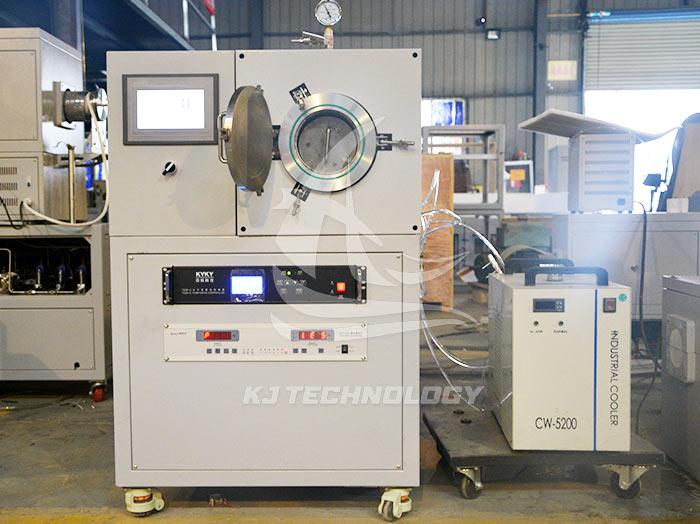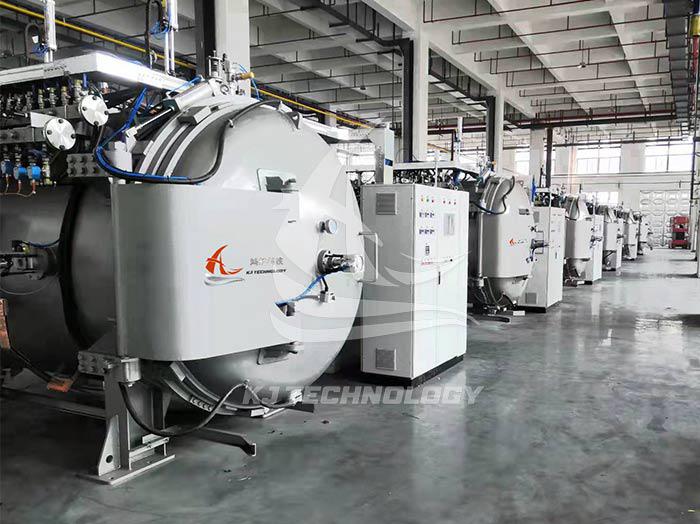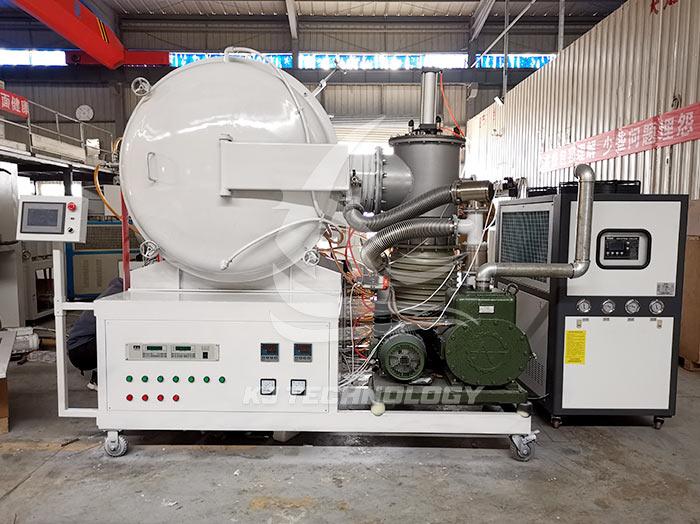What gases can be passed through a vacuum annealing muffle furnace?
 05-15-2025 Author: KJ technology
05-15-2025 Author: KJ technology
The vacuum annealing muffle furnace can be filled with various gases according to process requirements, mainly including inert protective gas, reducing gas, active reaction gas, and mixed gas. The following is a specific explanation:
1. Inert protective gas
Nitrogen (N ₂): chemically stable, low-cost, widely used to prevent metal oxidation or as a carrier gas. For example, passing nitrogen gas during stainless steel annealing can prevent surface oxidation and maintain smoothness.
Argon (Ar): More inert, suitable for high-purity materials (such as titanium alloys, semiconductors) or high-temperature annealing (>1000 ℃), to prevent oxidation and nitridation.
Helium (He): It has good thermal conductivity and is used for rapid heat treatment or processes that require precise temperature control, but the cost is relatively high.
2. Reductive gases
Hydrogen (H ₂): Used to remove surface oxide layers of materials or achieve bright annealing (such as copper and silver alloys). Strict control of hydrogen concentration (<4%) is required to prevent explosions, and a hydrogen leak alarm system should be equipped.
Carbon monoxide (CO): acts as a reducing agent under specific conditions, but has high toxicity and limited usage scenarios.
3. Reactive gas
Ammonia gas (NH3): used for nitriding treatment (such as surface nitriding of tool steel) to improve hardness and wear resistance. Accurate control of flow rate and temperature is required to avoid excessive nitriding.
Methane (CH ₄): Used for carbonization treatment (such as carbide carburizing), it needs to be combined with a vacuum environment to reduce impurity generation.
4. Mixed gas
Nitrogen hydrogen mixture (N ₂+H ₂): The common ratio is 95% N ₂+5% H ₂, which balances protective and reducing properties and is suitable for annealing copper and tungsten steel.
Argon hydrogen mixture (Ar+H ₂): used in high-temperature reduction processes (such as molybdenum and tungsten annealing), argon dilutes hydrogen gas to improve safety.
Key factors in gas selection
Material characteristics:
Nitrogen or argon is preferred for easily oxidizable metals such as copper and aluminum.
Highly active metals such as titanium and zirconium require pure argon or high-purity nitrogen gas (purity ≥ 99.999%).
Process requirements:
Bright annealing requires hydrogen gas or a mixture of hydrogen and nitrogen gas.
Nitriding and carburizing require active gases (NH3, CH4).
Safety and Cost:
Hydrogen requires explosion-proof design, and the cost of inert gases increases with purity.
Device compatibility:
The furnace body needs to be corrosion-resistant (such as stainless steel liner), and the gas system needs to be leak proof (such as double sleeve joints).








